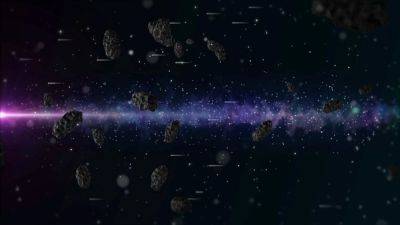Asteroids will always be a matter of concern for the Earth. Therefore, their detection and monitoring is necessary. One meteor named the Chelyabinsk meteor exploded over the city of Chelyabinsk in the southern Urals region of Russia on February 15, 2013. It injured 1,500 people with flying glass from broken windows. The Planetary Defense Coordination Office (PDCO), a branch of NASA, monitors the skies and keeps a watch on various Near-Earth Objects (NEOs). The organization has recently issued a warning against an asteroid designated as Asteroid 2023 PM1. It is just one of the millions of asteroids that have been discovered to date. NASA keeps an eye on the asteroids with the help of advanced ground and space-based telescopes and satellites.
Deadly solar storm coming towards Earth today; CME clouds approaching fast
01.08.2023 - 07:07 / tech.hindustantimes.com / Storm
The last solar activity in the month of July will finally show consequences in August as the coronal mass ejection (CME) cloud that was released during a magnetic filament eruption on July 28 is expected hit the Earth in a few hours today, August 1. The event was a major solar activity that sparked radio blackouts in some regions on Earth. The CME cloud that was released contains both highly charged particles and a high velocity, a combination of which can spark a powerful solar storm today. Check details.
According to a report by SpaceWeather.com, “Geomagnetic storms are possible on Aug. 1st when a CME is expected to hit Earth's magnetic field. Minor G1-class storms are likely with a chance of escalating to category G2. The CME was hurled almost directly toward Earth by the eruption of a magnetic filament in the sun's northern hemisphere on July 28”.
A category G2 storm is strong enough to disrupt wireless communications such as GPS and shortwave radios, which are mainly used by mariners, drone pilots, amateur radio operators, and emergency responders.
Such storms are also capable of damaging sensitive instruments on smaller satellites in the Earth's lower orbits. Further, by creating ‘drag' they can also crash these satellites. Last year, we saw this happen to SpaceX Starlink satellites. Further, there are some risks to ground-based electronic equipment, although a G2 class solar storm is not likely to affect them.
As we wait for the CME cloud, it should also be known that there are as many as 9 sunspot groups on the Earth-facing side of the Sun. These nine unstable regions can spark a terrifying solar storm in days to come.
NASA's SOHO (Solar and Heliospheric Observatory) is a satellite that was launched on December 2, 1995. It is a joint project between NASA and the European Space Agency (ESA) to study the sun, its atmosphere, and its effects on the solar system. Equipped with 12 scientific instruments, such as Extreme Ultraviolet Imaging Telescope (EIT), Michelson Doppler Imager (MDI), LASCO (Large Angle and Spectrometric Coronagraph), and others, SOHO captures images of the sun's corona, measures the velocity and magnetic fields of the sun's surface, and observes the faint corona around the sun.
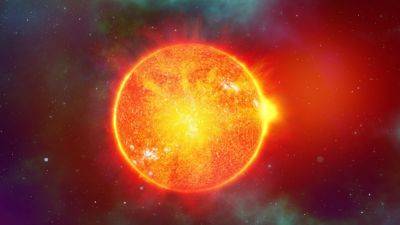
Solar storm threat for Earth rises after a helix CME was seen shooting out of the Sun
This week, the Earth has not been hit by a single solar storm. We have suffered some minor instances of radio blackouts and GPS disruptions due to solar winds, but apart from that, the Sun has remained quiet, even when a highly unstable sunspot, AR3405, has emerged in the Earth's view of the Sun. However, things could be changing. In the late hours of yesterday, strange radio emissions were detected, which is usually a warning sign for a solar flare eruption. Sure enough, a flare was set off and it did release a coronal mass ejection (CME), as per reports. The direction of the CME has not been confirmed so far, but there is a possibility that it could be Earth-bound.
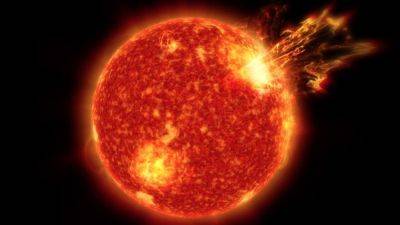
Solar storm prediction! X-class solar flares likely today, may spark blackouts
A new sunspot has entered the Earth-facing side of the Sun, and it appears to be crackling with solar flares. Luckily, so far it has not exploded, but it cannot be said just how long it will stay the same way. And perhaps that's why today's solar storm forecast has included a chance of an X-class solar flare eruption as well as the possibility of radio blackouts due to solar winds passing. It remains to be seen whether any eruptions today can release a coronal mass ejection (CME) towards the Earth and cause a further solar storm threat.
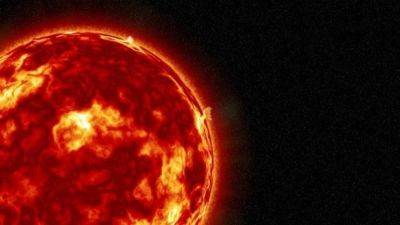
New sunspot sparks fears of terrifying solar storm on Earth
After a bit of a quiet period, the Sun is again gearing up for a period of high solar activity. In the last four days, the sunspots on the Earth-facing side of the Sun have been slowly disintegrating without exploding. But the same cannot be said about a new sunspot region, named AR3405, which will soon be on the Earth-facing side of the Sun. The sunspot has already exploded once and is considered to be brimming with M-class solar flares. Any of them can release a big coronal mass ejection (CME) and spark a major solar storm on Earth. The next few days are going to be concerning for our planet.
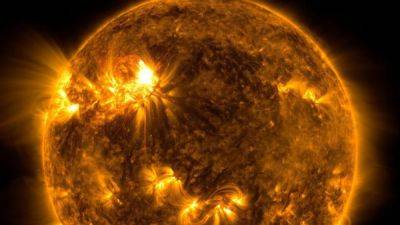
Solar storms can destroy power grids on Earth, satellites in the sky! Why scientists are worried
As the Sun moves towards the solar maximum gradually, scientists are worrying about a once in a century solar storm that can impact Earth, and humanity, severely. We are now experiencing the most active sun so far and it is generating massive solar storms frequently. The peak of solar activities happens every 11 years when the sun reaches the solar maximum. Normally, these solar storms do not severely impact the Earth, but, occasionally, they get so intense that they can generate strong geomagnetic storms that affect all the electrical infrastructure that humanity has created including the power grid and the satellites. NASA believes that if such a solar storm occurs, it could put the safety and livelihoods of people at risk. Now, it is being feared that such a massive solar storm can happen over the next few years.

Inside a solar storm inferno: NASA's Stereo-A spacecraft to "feel" a solar eruption
NASA spacecraft called STEREO-A will be visiting Earth after 17 long years of watching the Sun. Even as it does so, it will be passing inside a solar storm and sending the valuable data back to Earth to better chart our closest star. In effect, STEREO-A will be inside a solar eruption and that means it's not just what STEREO-A will see as it flies by Earth, but also what it will “feel,” that could lead to major discoveries.

This 1940 solar storm was so severe it made metal wires crackle; Know all about this ‘Sunspot tornado’
The most recent example of a solar storm that caused damage to Earth's infrastructure was in February 2022 when some of the Starlink satellites launched by SpaceX were trapped in the drag caused by the energized particles in the upper atmosphere, and crashed. However, it is nothing in comparison to the storm that struck the Earth in March 1940. This solar storm was so powerful that it made metal wires crackle due to excessive static electricity and disrupted phone lines and telegraph services for 5 hours. The New York Times called it a ‘Sunspot tornado', and it remains as an example of what can happen when a solar storm really shows its wrath. Let us take a look.

Solar storm strikes the Earth! Sparked by multiple solar flares, it is expected to last 48 hours
This week was filled with high-intensity solar activity. The week began with an X-class solar flare eruption that released two separate coronal mass ejections (CME), which eventually gave way for the cannibal CME that missed the Earth narrowly. Beyond this, there were several M-class and X-class solar flare eruptions on the Sun this week, all of which have released solar particles directed towards the Earth. This excess of solar particles has slowly made its way to our planet and has sparked a solar storm event that may last between 24 to 48 hours. We have not seen a long-term solar storm like this in years. So, what kind of impact it may have on us? Let us take a look.
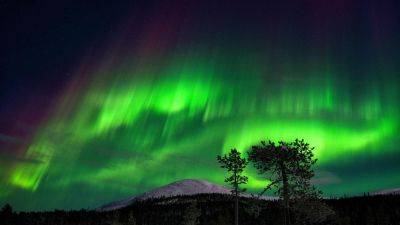
Solar storm disrupts US radio communications; more auroras expected
In a recent surge of solar activity, the Sun's eruptions have triggered a number of sloar storms, with further incidents projected to happen too. On August 7th, an intense X-class solar flare initiated radio blackouts across North America. Simultaneously, forecasts indicated a "cannibal" coronal mass ejection (CME), which had erupted on August 5th, might brush Earth's atmosphere with its edges, potentially causing a delayed solar storm. However, recent observations suggest it might have entirely missed our planet.
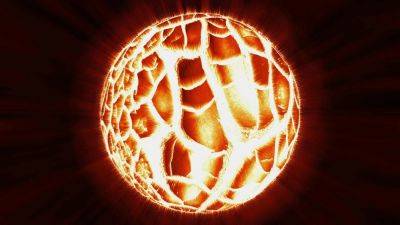
Solar storm scare: Cannibal CME misses Earth, but X1-class solar flare sparks blackouts
The last 24 hours were quite frightening for the Earth, as major solar storm prediction models said that a highly energized cannibal CME could deliver a glancing blow to the Earth today, August 9. However, it never came, leading the scientists to believe that the CME narrowly escaped the planet. Investigations are still ongoing to see whether the CME could have been delayed. However, there is some bad news as well. In the early hours of August 8, another X1-class solar flare erupted and sparked a deep shortwave radio blackout over the Pacific Ocean. Concerns are now rising on whether it will also send another CME towards our planet.

Solar storm threat spikes for astronauts as Sun turns volatile; CME could be fatal
Over the last few months, the effects of the Sun have been felt in the form of CME, solar storms, geomagnetic storms, and solar flares. In turn, these phenomena have sparked further events such as auroras, power blackouts, and disruption of radio communications. But why is the Sun becoming increasingly volatile? This is perhaps due to the approaching Solar Max and the Sun nearing the peak in its solar cycle. As a result, 2023 has also broken a 21-year record for the highest number of sunspots.
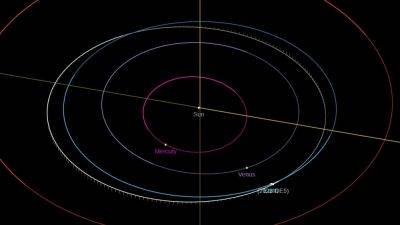
58-foot asteroid, as big as Chelyabinsk space rock, hurtling towards Earth for close approach
Asteroids fly by Earth at close distances at regular intervals, but not all of them impact the surface. However, there is no guarantee that none of them ever will. In 2013, an asteroid, the size of a house, exploded over the city of Chelyabinsk in Russia and damaged over 8000 buildings, leaving nearly 1000 people injured. More recently, another small space rock landed on a woman's roof in France and hit her in the chest! These close calls with asteroids highlight the importance of observing and tracking them for any potential close approaches to the planet.
